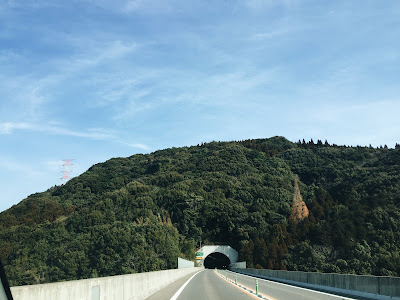昨日、第2回 きもの美人大賞を参加するために、福岡に戻りました。優勝しなかったですが、先生から「頑張った特別賞」(正式名前ではない)をいただきました!
Yesterday, I took a two hour drive back to Fukuoka to participate in a Kimono-related event! It’s supposed to be some kind of contest where you wear the kimono and get judged on how well you wear it, but I ended up getting a lot of help towards the end.
Even my hair was done by some kind people because I am terrible at doing my own hair.
Anyway, the point of the whole thing was to get on stage and answer a few questions. I got asked about why I liked Japanese culture, and about the time that I went to my cousins’ wedding in my kimono. I don’t know if I answered them appropriately, but I felt like my coordinate (of Kimono + Obi + small items) was the worst of the 6 contestants.
But for some reason, my teacher gave me a prize! I think it was for trying, because I was one of the most inexperienced contestants.
The prize is a meal at one of the restaurants in the hotel! I didn’t have a chance to use it, though. And my coordinate for the day:
Notes from my sensei’s speech
The goal of this event is to get people to wear kimono more often, and so my sensei made a speech (this was before the contestants were interviewed). She wants us to think of kimono as one part of a wardrobe because it can be comfortable.
And I should add here that Sensei is kind of a traditionalist in that for her, kimono is worn a certain way and the updated things are the fabrics and accessories. And even then she finds things like the Swarovski kimono garish. But Japanese youth are updating the style in different ways and really, both ways are perfectly fine. It’s how culture is.
Anyway, she says that the main problem with kimono nowadays is that people think it’s hard to wear. And it’s really not, because with her style it can be done in 10min and it’s really comfy (ok a bit of self-promotion here but it really is the most comfortable style I’ve tried). She has basically worked to make wearing the kimono simple, and she believes that if we follow our body line, we can wear kimono (aka there are no unsuitable body types)
And she also mentioned that kimono is a hidden culture (隠す文化) and that it does evolve, though slower than western fashion. For example, people live in cities nowadays, and kimono colours and textures have adapted to concrete and glass.
The last part was mostly advice on wearing the kimono, especially in formal occasions. She repeated something she said in class: “an expensive kimono is not necessarily a formal one”.
One Digression: Kimono and Yukata
I’ve seen articles on the internet (in English and Japanese) claiming/questioning if Yukata and Kimono are one and the same. One person put it as “kimono is formal and Yukata is casual and they are different things”. So I checked with the finishing school vice-principal as she was helping me and she said that:
A Yukata is a type of kimono. If you think of it in Western clothes, it’s basically t-shirt and fbts and flip-flops. You won’t wear that to a restaurant or a hotel. And there are many types of kimono, from casual (aka a day out with friends) to black tie/wedding formal, so you can’t just say that “kimono is formal” unless you specify what kind of kimono you’re talking about.






